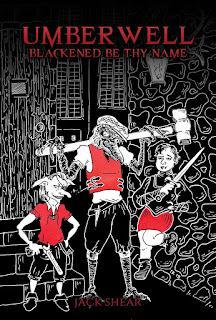I wrote a post
last week that was a follow-up to a previous posts where I outlined a few mysteries that had come up in our new 4 years-old Land of Azurth campaign. Anne of
DIY & Dragons asked if I had in thoughts to share regarding who these mysteries developed and the development of this sort of stuff in general.
I should say this campaign is not an open sandbox. Most adventures come about by me as the DM laying out the particularly setting and situation, and the PC's confronting the problems as presented, or reframing the problem as something else and confronting
that. The applicability of what I say here will of course vary based on how you run your campaign and the degree you care about such things, obviously.
Embed mysteries. I constructed the bones of the Land of Azurth setting to have some deep mysteries. I hinted at these but didn't strongly telegraph them, or push them on the players. They are to this day, not aware of most of them--though they have brushed against them once or twice, and are interested in things that connect to them. You have to be patient, but if you want the player's interested in the mysterious background of your setting it has to be there.
Don't make it all up. Some people feel like the fixed details of the setting are necessary for player's to make maximum meaningful choices about their actions. I advocate a more of a tv series looseness as I've discussed
before. So, if one of my initial ideas was "the World Emperor is mad!" or whatever, but as I'm dropping hints to this, the PCs become convinced the "World Emperor is possessed!" well, you know, maybe he could be? Also, you have to leave room for the players' to become interested in things you hadn't thought of yet, and no need to waste all your good adventure seeds on fallow ground.
Recurrent NPCs with their own agendas. My players are suspicious that Viola, the Clockwork Princess of Yanth Country, despite most appearances as a benevolent monarch, may have a sinister agenda. What made them suspicious? Well, the Princess's somewhat callous behavior and general "need to know attitude," and conspiratorial musings of a pirate queen they once interacted with. These things would never have mattered if the PCs hadn't had frequently and suggestive interactions with the Princess for them to start wondering about her.
Treasures with a story. Magic items and treasure serves a utilitarian purpose, but it shouldn't just be --or even mostly--be that. In prepping for the session, I substituted the
Book of Doors for a spell book in the original run of Mortzengersturm, and added a portal to 19th Century Earth in Mort's chamber. That has gotten at least one player very interested in portals and incursions from or too other worlds, and given me further references to drop in later adventures. The Projector to the Etheric Zone was another adventure seed lying in wait for the player's to take interest. And potentially valuable mysteries tend to get their interest first!
Work with the Players' creation. Most of my players came up with a little backstory at creation. No multi-page epics, but a paragraph or so, based on the map and campaign intro materials I gave them. Plus, I had asked them all at the outset, "Why are you in Rivertown?" Jim's bard, Kully, for instance had come looking for his missing father. He had initially told me a talking calico cougar had told him to seek his father in Rivertown. I suggested maybe it was a Calico Cat Man, and Jim agreed. Now, part of the setting intro was that their were no cat folk in Azurth. So, now we had a mystery--and a coincidental name connection to the mysterious crime lord I had already named. Then of course, there was the recent return of Kully's father to set off the recent adventure.
So that's it. Or, at least that's all I can think of at the moment. It's been gratifying to run a campaign where the players aren't just interested in the adventures, but in the world behind them.





















/cdn.vox-cdn.com/uploads/chorus_asset/file/3800176/wytches_03_04.0.jpg)































